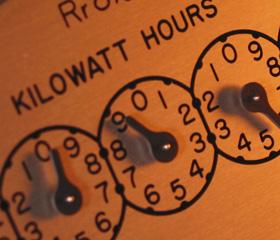Australia’s electricity prices are rising and not everyone is finding it easy to keep up. Fingers have been pointed at peak demand; the times, like very hot summer afternoons, when we use large amounts of electricity. Building infrastructure to meet that demand is expensive, and that cost gets passed on to consumers.
Rising energy costs affect all households and businesses, but some are more vulnerable than others. Low-income families, older people and those with disabilities are particularly at risk.
So how do consumers tackle peak demand and how will this affect vulnerable households?
Ways to reduce how much power we use
The most obvious step is for customers to change their electricity demand to save themselves money and potentially reduce costs in the electricity system. By reducing some electricity uses, shifting electricity consumption to an off-peak time period or self-generating electricity, for example through rooftop solar panels, customers can begin to reduce the costs.
There is also increasing interest in measures that could encourage customers to reduce usage at peak times. Implementing tariffs and different prices applied to fixed periods during the day is one way to go. Critical peak pricing and rebates – a high price on maybe just a few hours on a few days a year (or a rebate for reducing use at those times) – could also see benefits.
Automation, or direct load control, is also an efficient way of reducing costs. This can be as simple as using technology to reduce consumption during peak hours, such as turning down the thermostat on air conditioning.
Impacts for vulnerable households
The way these measures will affect vulnerable households varies. Factors including size of household, appliance ownership and usage, and energy efficiency will all contribute to how households react to changes. The timing of the peak and the differential between peak, shoulder and off-peak rates can also make a big difference. Narrow peak periods (say, from 4-7pm) or infrequent critical peak pricing peaks (i.e. a few days a year when prices are higher for maybe an hour) will have a different impact to longer peak periods (such as from 1-8 pm).
For example, if peak pricing operates from 1-8pm, it could be very difficult for the low income working family to rearrange their use of appliances to avoid the high prices. In contrast, with a 4-7 pm peak, a retired couple at home for most of the day might be able to benefit from using appliances mainly during off-peak times earlier in the day.
There is also a difference between everyday peaks and peaks that occur for only a few occasions each year. We know that in Australia up to 25% of costs are driven by peak demand events which last less than 40 hours a year; that is, the hours on very hot days when air-conditioning is used heavily.
We need to be clear about the peak demand problems that must be addressed to tailor appropriate solutions. For example, for critical peaks on a few summer days, a year-round time of use tariff may be less useful than other, more flexible, methods.
Is automation the way to go?
Automation delivers the greatest and most sustained shift in demand (compared to price incentives alone). This is particularly true where consumers have air conditioners or electric heating. A review of trials found peak reductions of 31% with automation (16% without) for critical peak price tariffs and 16% (5% without) for time of use tariffs.
Automation is sometimes resisted by customers as a form of “big brother” control. However, automation can mean that appliances can be adjusted to use less electricity at peak times with minimal impact on the customer – for example the thermostat on the air-conditioner may just be set to a slightly higher temperature for a short period. The customer could get a bill saving for agreeing to allow their appliance to be automated in this way.
Automation may produce more certainty of response and thus fewer risks for retailers and networks (and so be more cost-effective). It could also be designed to make it a good choice for customers. The Federal Government is currently consulting on a proposal to require “smart appliance” interfaces in some appliances that could facilitate such automation. But many vulnerable households may not be able to afford these appliances.
Energy saving schemes need not be targeted only at the well-off. To tackle peak power as well as overall demand and need, vulnerable households must also be targeted to ensure they benefit. This could include designating priority groups to benefit from grants and low interest loans, plus tailored advice and information.
Addressing peak demand should bring the potential to reduce costs. However, the design of schemes to tackle peak demand needs careful thought. Before embarking on this path, however, it will be important that we make vulnerable households more resilient to a range of energy futures, through appropriately targeted assistance with energy saving measures.
This article is based on a larger report, Addressing peak demand – opportunities and risks for vulnerable households.
Gill Owen is Research Program Leader, Monash Sustainability Institute at Monash University. She received some funding from AGL towards the cost of this research.
This article was originally published at The Conversation.
Read the original article.










